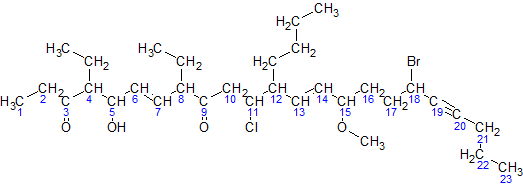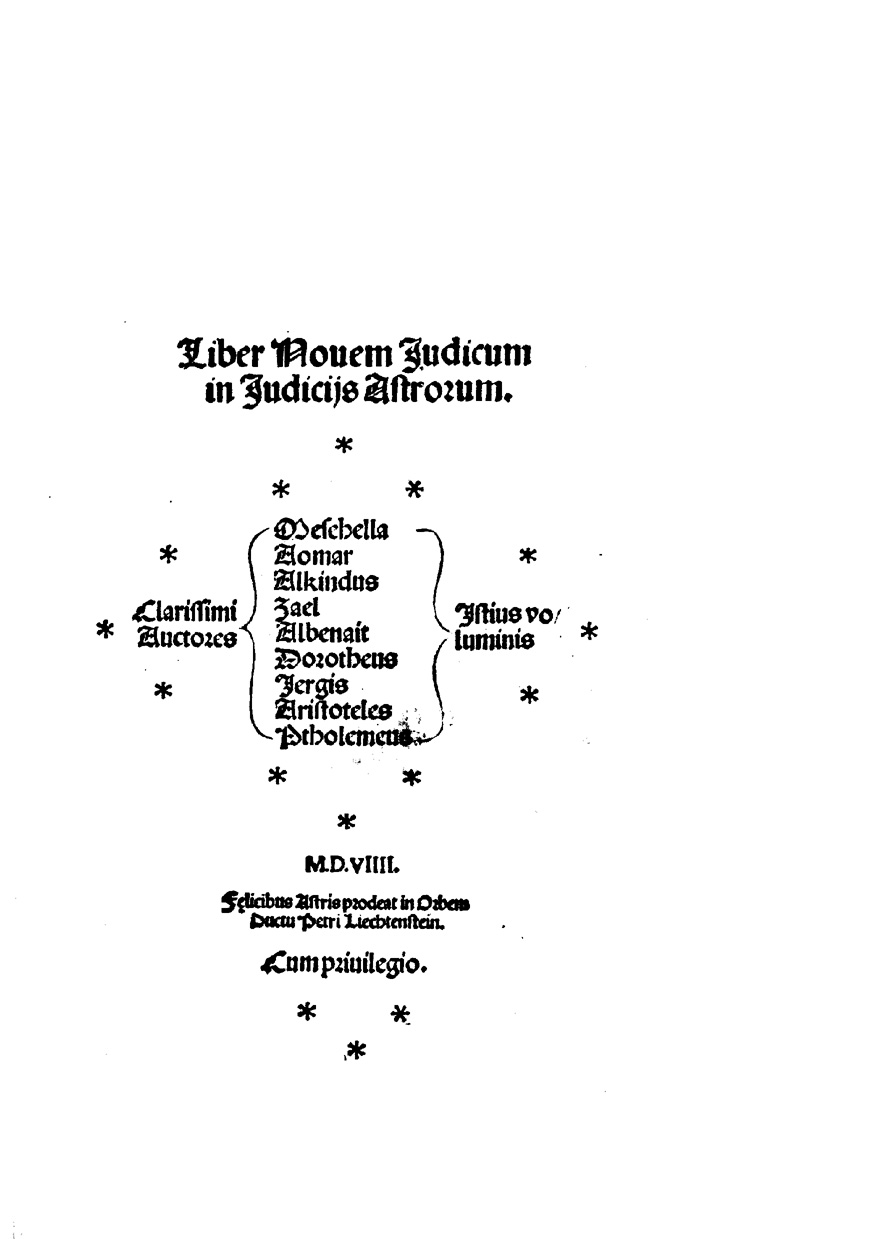|
Alcohols
In chemistry, an alcohol is a type of organic compound that carries at least one hydroxyl () functional group bound to a saturated carbon atom. The term ''alcohol'' originally referred to the primary alcohol ethanol (ethyl alcohol), which is used as a drug and is the main alcohol present in alcoholic drinks. An important class of alcohols, of which methanol and ethanol are the simplest examples, includes all compounds which conform to the general formula . Simple monoalcohols that are the subject of this article include primary (), secondary () and tertiary () alcohols. The suffix ''-ol'' appears in the IUPAC chemical name of all substances where the hydroxyl group is the functional group with the highest priority. When a higher priority group is present in the compound, the prefix ''hydroxy-'' is used in its IUPAC name. The suffix ''-ol'' in non-IUPAC names (such as paracetamol or cholesterol) also typically indicates that the substance is an alcohol. However, some compound ... [...More Info...] [...Related Items...] OR: [Wikipedia] [Google] [Baidu] |
Ethanol
Ethanol (abbr. EtOH; also called ethyl alcohol, grain alcohol, drinking alcohol, or simply alcohol) is an organic compound. It is an Alcohol (chemistry), alcohol with the chemical formula . Its formula can be also written as or (an ethyl group linked to a hydroxyl group). Ethanol is a Volatility (chemistry), volatile, Combustibility and flammability, flammable, colorless liquid with a characteristic wine-like odor and pungent taste. It is a psychoactive recreational drug, the active ingredient in alcoholic drinks. Ethanol is naturally produced by the fermentation process of Carbohydrate, sugars by yeasts or via Petrochemistry, petrochemical processes such as ethylene hydration. It has medical applications as an antiseptic and disinfectant. It is used as a chemical solvent and in the Chemical synthesis, synthesis of organic compounds, and as a Alcohol fuel, fuel source. Ethanol also can be dehydrated to make ethylene, an important chemical feedstock. As of 2006, world produ ... [...More Info...] [...Related Items...] OR: [Wikipedia] [Google] [Baidu] |
Alcohol (drug)
Alcohol, sometimes referred to by the chemical name ''ethanol'', is a depressant, depressant drug that is the active ingredient in alcoholic drink, drinks such as beer, wine, and distilled spirits (hard liquor). It is one of the oldest and most commonly consumed recreational drugs, causing the characteristic effects of alcohol intoxication ("drunkenness"). Among other effects, alcohol produces happiness and euphoria, anxiolytic, decreased anxiety, increased sociability, sedation, impairment of cognitive, memory, motor control, motor, and sense, sensory function, and generalized depression of central nervous system (CNS) function. Ethanol is only one of several types of Alcohol (chemistry), alcohol, but it is the only type of alcohol that is found in alcoholic beverages or commonly used for recreational purposes; other alcohols such as methanol and isopropyl alcohol are significantly more toxicity, toxic. A mild, brief exposure to isopropanol, being only moderately more toxic tha ... [...More Info...] [...Related Items...] OR: [Wikipedia] [Google] [Baidu] |
IUPAC Nomenclature Of Organic Chemistry
In chemical nomenclature, the IUPAC nomenclature of organic chemistry is a method of naming organic chemical compounds as recommended by the International Union of Pure and Applied Chemistry (IUPAC). It is published in the ''Nomenclature of Organic Chemistry'' (informally called the Blue Book). Ideally, every possible organic compound should have a name from which an unambiguous structural formula can be created. There is also an IUPAC nomenclature of inorganic chemistry. To avoid long and tedious names in normal communication, the official IUPAC naming recommendations are not always followed in practice, except when it is necessary to give an unambiguous and absolute definition to a compound. IUPAC names can sometimes be simpler than older names, as with ethanol, instead of ethyl alcohol. For relatively simple molecules they can be more easily understood than non-systematic names, which must be learnt or looked over. However, the common or trivial name is often substantially ... [...More Info...] [...Related Items...] OR: [Wikipedia] [Google] [Baidu] |
Hydroxyl
In chemistry, a hydroxy or hydroxyl group is a functional group with the chemical formula and composed of one oxygen atom covalently bonded to one hydrogen atom. In organic chemistry, alcohols and carboxylic acids contain one or more hydroxy groups. Both the negatively charged anion , called hydroxide, and the neutral radical , known as the hydroxyl radical, consist of an unbonded hydroxy group. According to IUPAC definitions, the term ''hydroxyl'' refers to the hydroxyl radical () only, while the functional group is called a ''hydroxy group''. Properties Water, alcohols, carboxylic acids, and many other hydroxy-containing compounds can be readily deprotonated due to a large difference between the electronegativity of oxygen (3.5) and that of hydrogen (2.1). Hydroxy-containing compounds engage in intermolecular hydrogen bonding increasing the electrostatic attraction between molecules and thus to higher boiling and melting points than found for compounds that lack this f ... [...More Info...] [...Related Items...] OR: [Wikipedia] [Google] [Baidu] |
Methanol
Methanol (also called methyl alcohol and wood spirit, amongst other names) is an organic chemical and the simplest aliphatic alcohol, with the formula C H3 O H (a methyl group linked to a hydroxyl group, often abbreviated as MeOH). It is a light, volatile, colourless, flammable liquid with a distinctive alcoholic odour similar to that of ethanol (potable alcohol). A polar solvent, methanol acquired the name wood alcohol because it was once produced chiefly by the destructive distillation of wood. Today, methanol is mainly produced industrially by hydrogenation of carbon monoxide. Methanol consists of a methyl group linked to a polar hydroxyl group. With more than 20 million tons produced annually, it is used as a precursor to other commodity chemicals, including formaldehyde, acetic acid, methyl tert-butyl ether, methyl benzoate, anisole, peroxyacids, as well as a host of more specialised chemicals. Occurrence Small amounts of methanol are present in normal, healthy hu ... [...More Info...] [...Related Items...] OR: [Wikipedia] [Google] [Baidu] |
Alcohol
Alcohol most commonly refers to: * Alcohol (chemistry), an organic compound in which a hydroxyl group is bound to a carbon atom * Alcohol (drug), an intoxicant found in alcoholic drinks Alcohol may also refer to: Chemicals * Ethanol, one of several alcohols, commonly known as alcohol in everyday life ** Alcoholic beverage, sometimes referred to as "alcohol", any drink containing ethanol ** Surrogate alcohol, any substance containing ethanol that is intentionally consumed by humans but is not meant for human consumption * Methanol, a commodity chemical that can serve as a precursor to other chemicals * Alcohol fuel, a fuel containing alcohols * Alcohol powder, a powdered form of alcohol * Fusel alcohol, a mixture of several alcohols (chiefly amyl alcohol) produced as a by-product of alcoholic fermentation. * Alcohols (medicine), the use of alcohols in medicine ** Rubbing alcohol, a solution of denatured or isopropyl alcohol used in medicine Music * Alcohol (Barenaked Ladies song) ... [...More Info...] [...Related Items...] OR: [Wikipedia] [Google] [Baidu] |
Alcohol General
Alcohol most commonly refers to: * Alcohol (chemistry), an organic compound in which a hydroxyl group is bound to a carbon atom * Alcohol (drug), an intoxicant found in alcoholic drinks Alcohol may also refer to: Chemicals * Ethanol, one of several alcohols, commonly known as alcohol in everyday life ** Alcoholic beverage, sometimes referred to as "alcohol", any drink containing ethanol ** Surrogate alcohol, any substance containing ethanol that is intentionally consumed by humans but is not meant for human consumption * Methanol, a commodity chemical that can serve as a precursor to other chemicals * Alcohol fuel, a fuel containing alcohols * Alcohol powder, a powdered form of alcohol * Fusel alcohol, a mixture of several alcohols (chiefly amyl alcohol) produced as a by-product of alcoholic fermentation. * Alcohols (medicine), the use of alcohols in medicine ** Rubbing alcohol, a solution of denatured or isopropyl alcohol used in medicine Music * "Alcohol" (Barenaked Ladies so ... [...More Info...] [...Related Items...] OR: [Wikipedia] [Google] [Baidu] |
Salt-effect Distillation
Salt-effect distillation is a method of extractive distillation in which a salt is dissolved in the mixture of liquids to be distilled. The salt acts as a separating agent by raising the relative volatility of the mixture and by breaking any azeotropes that may otherwise form. Setup The salt is fed into the distillation column at a steady rate by adding it to the reflux stream at the top of the column. It dissolves in the liquid phase, and since it is non- volatile, flows out with the heavier bottoms stream. The bottoms are partially or completely evaporated to recover the salt for reuse. Usage Extractive distillation is more costly than ordinary fractional distillation due to costs associated with the recovery of the separating agent. One advantage of salt-effect distillation over other types of azeotropic distillation is the potential for reduced costs associated with energy usage. In addition, the salt ions have a greater effect on the volatility of the mixture to be dis ... [...More Info...] [...Related Items...] OR: [Wikipedia] [Google] [Baidu] |
Relative Volatility
Relative volatility is a measure comparing the vapor pressures of the components in a liquid mixture of chemicals. This quantity is widely used in designing large industrial distillation processes. In effect, it indicates the ease or difficulty of using distillation to separate the more volatile components from the less volatile components in a mixture. By convention, relative volatility is usually denoted as \alpha. Relative volatilities are used in the design of all types of distillation processes as well as other separation or absorption processes that involve the contacting of vapor and liquid phases in a series of equilibrium stages. Relative volatilities are not used in separation or absorption processes that involve components reacting with each other (for example, the absorption of gaseous carbon dioxide in aqueous solutions of sodium hydroxide). Definition For a liquid mixture of two components (called a ''binary mixture'') at a given temperature and pressure, the re ... [...More Info...] [...Related Items...] OR: [Wikipedia] [Google] [Baidu] |
Al-Kindi
Abū Yūsuf Yaʻqūb ibn ʼIsḥāq aṣ-Ṣabbāḥ al-Kindī (; ar, أبو يوسف يعقوب بن إسحاق الصبّاح الكندي; la, Alkindus; c. 801–873 AD) was an Arab Muslim philosopher, polymath, mathematician, physician and music theorist. Al-Kindi was the first of the Islamic peripatetic philosophers, and is hailed as the "father of Arab philosophy". Al-Kindi was born in Kufa and educated in Baghdad. He became a prominent figure in the House of Wisdom, and a number of Abbasid Caliphs appointed him to oversee the translation of Greek scientific and philosophical texts into the Arabic language. This contact with "the philosophy of the ancients" (as Hellenistic philosophy was often referred to by Muslim scholars) had a profound effect on him, as he synthesized, adapted and promoted Hellenistic and Peripatetic philosophy in the Muslim world. He subsequently wrote hundreds of original treatises of his own on a range of subjects ranging from metaphysics, ethi ... [...More Info...] [...Related Items...] OR: [Wikipedia] [Google] [Baidu] |
Al-Farabi
Abu Nasr Muhammad Al-Farabi ( fa, ابونصر محمد فارابی), ( ar, أبو نصر محمد الفارابي), known in the Western world, West as Alpharabius; (c. 872 – between 14 December, 950 and 12 January, 951)PDF version was a renowned Early Islamic philosophy, early Islamic philosopher and jurist who wrote in the fields of political philosophy, metaphysics, ethics and logic. He was also a Islamic science, scientist, Islamic astronomy, cosmologist, Mathematics in medieval Islam, mathematician and Islamic music, music theorist.Ludwig W. Adamec (2009), ''Historical Dictionary of Islam'', pp.95–96. Scarecrow Press. . In Islamic philosophy, Islamic philosophical tradition he was often called "the Second Teacher", following Aristotle who was known as "the First Teacher". He is credited with preserving the original Ancient Greek literature, Greek texts during the Middle Ages via his Commentary (philology), commentaries and treatises, and influencing many prominent philo ... [...More Info...] [...Related Items...] OR: [Wikipedia] [Google] [Baidu] |
Al-Zahrawi
Abū al-Qāsim Khalaf ibn al-'Abbās al-Zahrāwī al-Ansari ( ar, أبو القاسم خلف بن العباس الزهراوي; 936–1013), popularly known as al-Zahrawi (), Latinised as Albucasis (from Arabic ''Abū al-Qāsim''), was an Arab Andalusian physician, surgeon and chemist."Al-Zahrawi's ancestry then, one might infer, goes back to the Arabian Peninsula, to the inhabitants of "al-Madinah," the first city that accepted the message of Islam." Considered to be the greatest surgeon of the Middle Ages, he has been referred to as the "father of modern surgery". Al-Zahrawi's principal work is the ''Kitab al-Tasrif'', a thirty-volume encyclopedia of medical practices. The surgery chapter of this work was later translated into Latin, attaining popularity and becoming the standard textbook in Europe for the next five hundred years. Al-Zahrawi's pioneering contributions to the field of surgical procedures and instruments had an enormous impact in the East and West well ... [...More Info...] [...Related Items...] OR: [Wikipedia] [Google] [Baidu] |







.jpg)